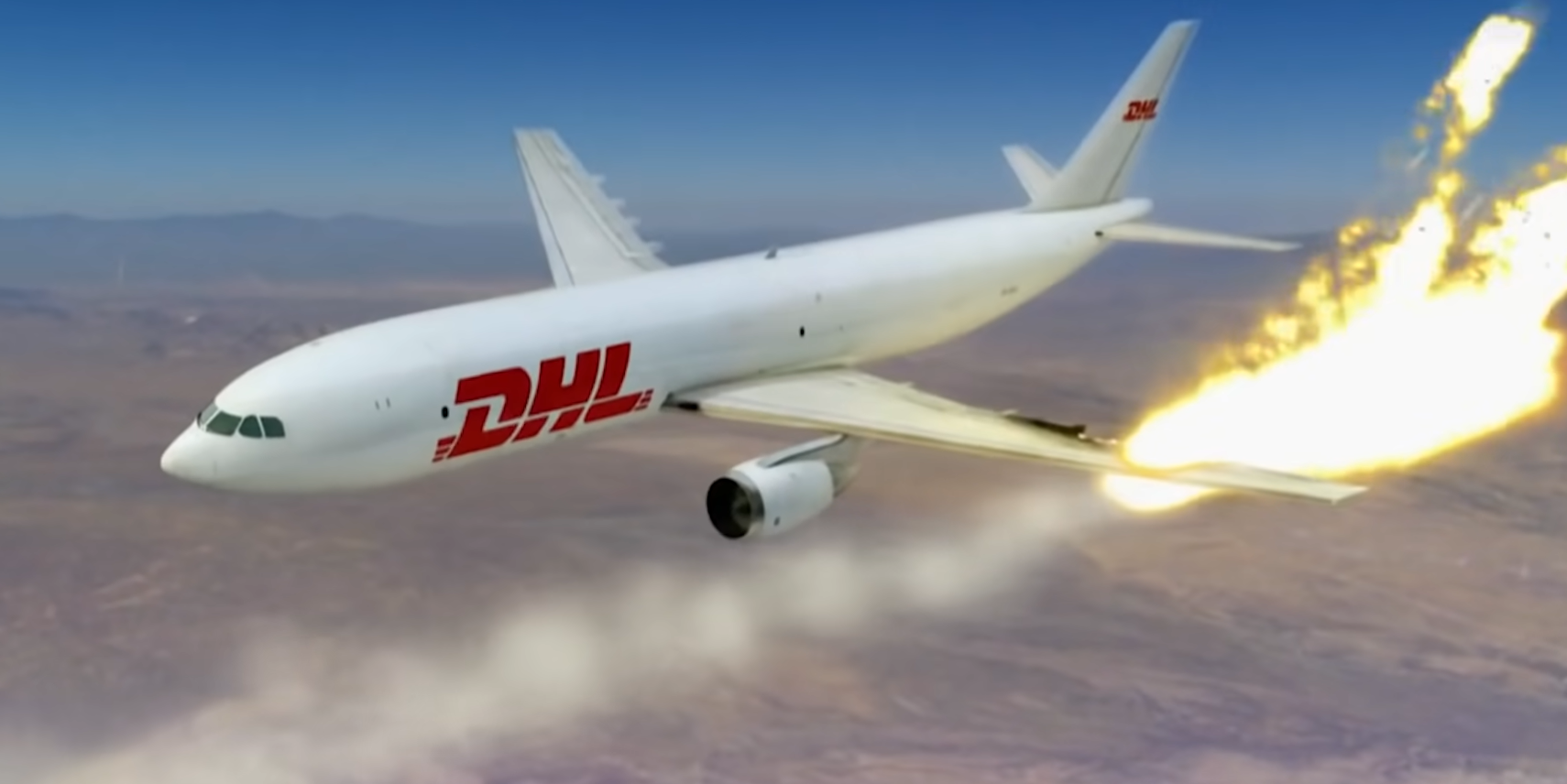19 years ago, a DHL Airbus A300 Freighter was struck by a ground-to-air missile shortly after takeoff from Baghdad, Iraq. The missile struck the left wing of the aircraft, causing a total loss of hydraulics. Despite the loss of hydraulic control, the three-man crew miraculously landed the seriously damaged aircraft, using differential engine thrust as the only pilot input.
Flight Details
On 22nd November 2003, the Airbus A300B2-200F with registration OO-DLL was operating a cargo mission between Baghdad and Bahrain. The cargo plane owned by European Air Transport was doing business as DHL Express and it was one of the handful of civilian aircraft that delivered mail and humanitarian aid to the US soldiers in Baghdad.
After delivering the cargo, captain Eric Gennotte (38-year-old), F/O Steve Michielsen (29-year-old), and flight engineer, Mario Rofail (54-year-old) departed Baghdad using a special take-off procedure designed to expedite the climb amid the threat of attack. The captain had accumulated 3,300 flight hours, more than half of them in the A300 whereas the F/O had 1,275 flight hours and the flight engineer had 13,400 hours of flight experience in his log book. They performed a special take-off procedure, which was brought into effect after the 2003 war. It included take-off with slats only and maximum thrust, early retraction of the slats and a climb at the optimum speed of 215 knots.
Even though, the aircraft was performing a rapid climb out to reduce exposure to ground attack, shortly after departure from Baghdad, at just over 8000 feet, a ground-to-air missile which was later identified to be a 9K34 Strela-3 (SA-14 Gremlin) struck the left wing of the aircraft. During an award function, it was cited that “an explosion was heard, followed by a cacophony of aural warnings and visual displays showing a master warning on all flight controls.”
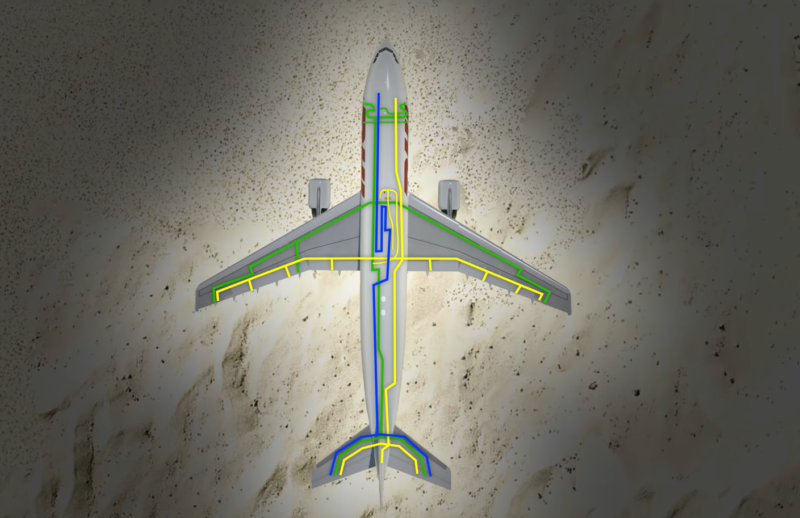
After being hit by the missile, the aircraft lost its hydraulic controls, so the crew no longer had control of the ailerons, elevators and rudder. The green and yellow hydraulic circuits were lost immediately whereas the blue one was lost shortly after. The aircraft started to pitch rapidly, oscillating between a nose-up and a nose-down position. Furthermore, the slats and flaps were retracted and frozen whereas the spoilers and horizontal stabiliser were frozen.
Return To Baghdad
Even though the crew found themselves in a hopeless situation, they eventually made it safely to the ground. Shortly after the missile struck the aircraft, the crew’s learning period started during which the crew discovered how to control the pitch by modulating thrust.
“THE THRUST BECAME A PITCH CONTROL”
They learned how to manage turns, climbs and descents by experimenting in-flight. After a meandering trajectory, the crew executed a right turn and initiated a descent path back to Baghdad International Airport.
Returning to Baghdad, the flight engineer executed a gravity drop to extend the landing gear, which is normally accomplished with hydraulic power. Early deployment of the landing gear was critical to a safe outcome because the increased drag helped reduce speed and stabilize the aircraft. The captain circled twice while the other two crew members extended the landing gear manually, but was conscious of the time limitations, as the left wing was still on fire.
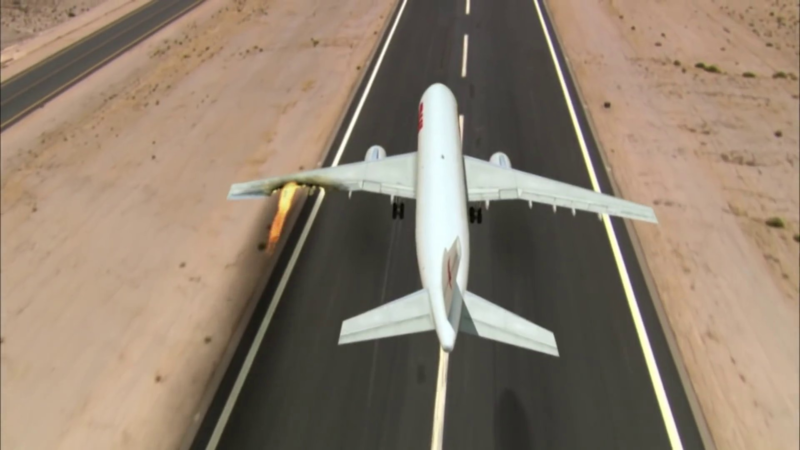
The left-wing, which had lost much of its surface, was on fire, losing a massive trail of smoke. The left side was losing fuel and the flight engineer monitored the engine closely; if fuel flow was lost from the left side, he would have to feed fuel from a right tank to maintain thrust. Survival was dependent on the accurate power control of each jet engine, as both engines were running.
The crew elected runway 33R, the longest of the two runways at Baghdad and set up for a final approach. At that time, the wind was 290° at 20 knots with turbulent conditions. Because of the turbulence, the aircraft drifted to the right, requiring a thrust correction. As a result, the shorter 33L runway was chosen by the captain. The captain eventually set up a 20-mile final with a reported approach speed of 225 knots, slowing to about 180 knots just before touchdown.
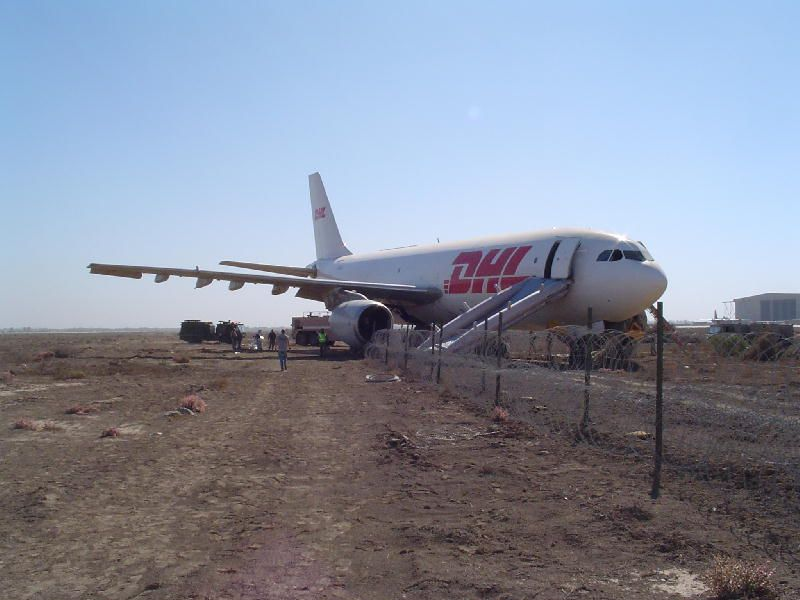
With thrust adjustments, the crew controlled the roll, however, the aircraft touched down off the runway centerline. The flight engineer immediately deployed full reverse thrust, but the aircraft veered off the runway surface and onto the unprepared ground.
The aircraft landed around 25 minutes after the missile impact with a controlled touchdown (vertical velocity below 10 feet/s), a positive pitch and an eight-degree heading and a 10-degree bank to the right. The A300 ran through the rough, soft ground, throwing up a plume of sand and dragging a razor-wire barrier, before coming to a stop after rolling out for around 1,000 meters.

Conclusion and Aftermaths
Following the incident, a thorough investigation revealed that the left engine would rotate, but had ingested razor wire and lots of sand and was deemed unsalvageable. On the other hand, the right engine had seized, presumably from ingesting even larger components and sand at full reverse thrust. Moreover, the engine inlet suffered unacceptable lip damage from the wire and fence components.
The crew’s effort to keep both engines running by ensuring a positive supply of fuel and ignition was vital for the safe landing of the A300. If one of the engines had failed, the aircraft would have probably been lost. The flight engineer was, therefore, prepared to open the cross feed in case the left main tank emptied, but not too soon because the fuel in the right-wing would then be lost through the leak on the left side.
During the emergency, the flight engineer took over all radio communication, relieving both pilots. He also made sure that the aircraft was depressurised before touchdown to guarantee a successful emergency evacuation. It was also concluded that the outboard left wing fuel tank 1A was full at takeoff, due to which no fuel-air vapour explosion occurred.
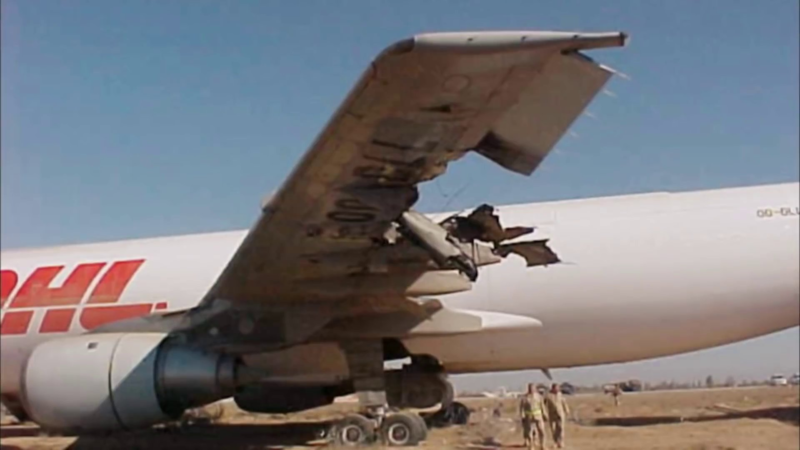
On the wing, around 10 feet of the rear spar in front of the outboard flap was either blown or burnt away, whereas the top and bottom wing skins reportedly bulged upward and downward where the initial explosion occurred.
Only a small portion of the flap remained dangling off the outboard flap track with the rest of the flap missing. Furthermore, the front main spar was intact, though burned, and the fuel-tank ribs in front of the outboard fuel tank were burned halfway through.
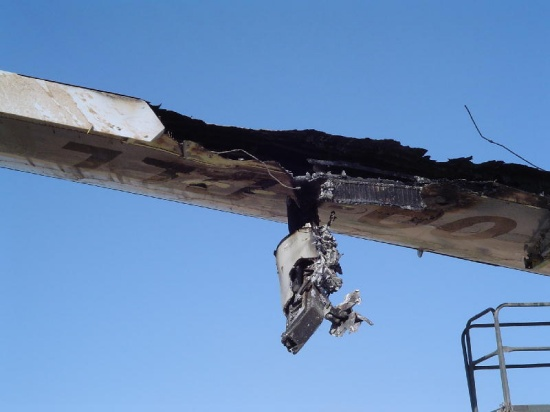
Despite the danger posed by the missile strike, all three crew members survived the incident without injuries. It was the first time that a civilian aircraft using Baghdad Airport had been hit by a missile although military aircraft have been hit several times. Also, this is the first time an airliner landed without hydraulics with no loss of life.
Following their commendable piloting skills, the crew members were awarded the 2003 Hugh Gordon-Burge Memorial prize by the Honourable Company of Air Pilots. This award is awarded to flight crew whose actions contributed outstandingly by saving their aircraft or passengers or made a significant contribution to future air safety. The annual award is organized only if a nomination is considered to be of significant merit.
Alongside, the crew members were jointly awarded the Flight Safety Foundation’s FSF Professionalism Award in Flight Safety for their extraordinary piloting skills in flying their aircraft to a safe landing after a missile strike.
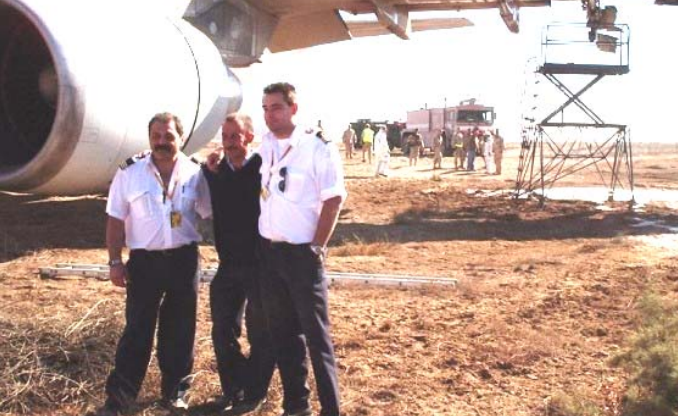
Feature Image via Wonder


